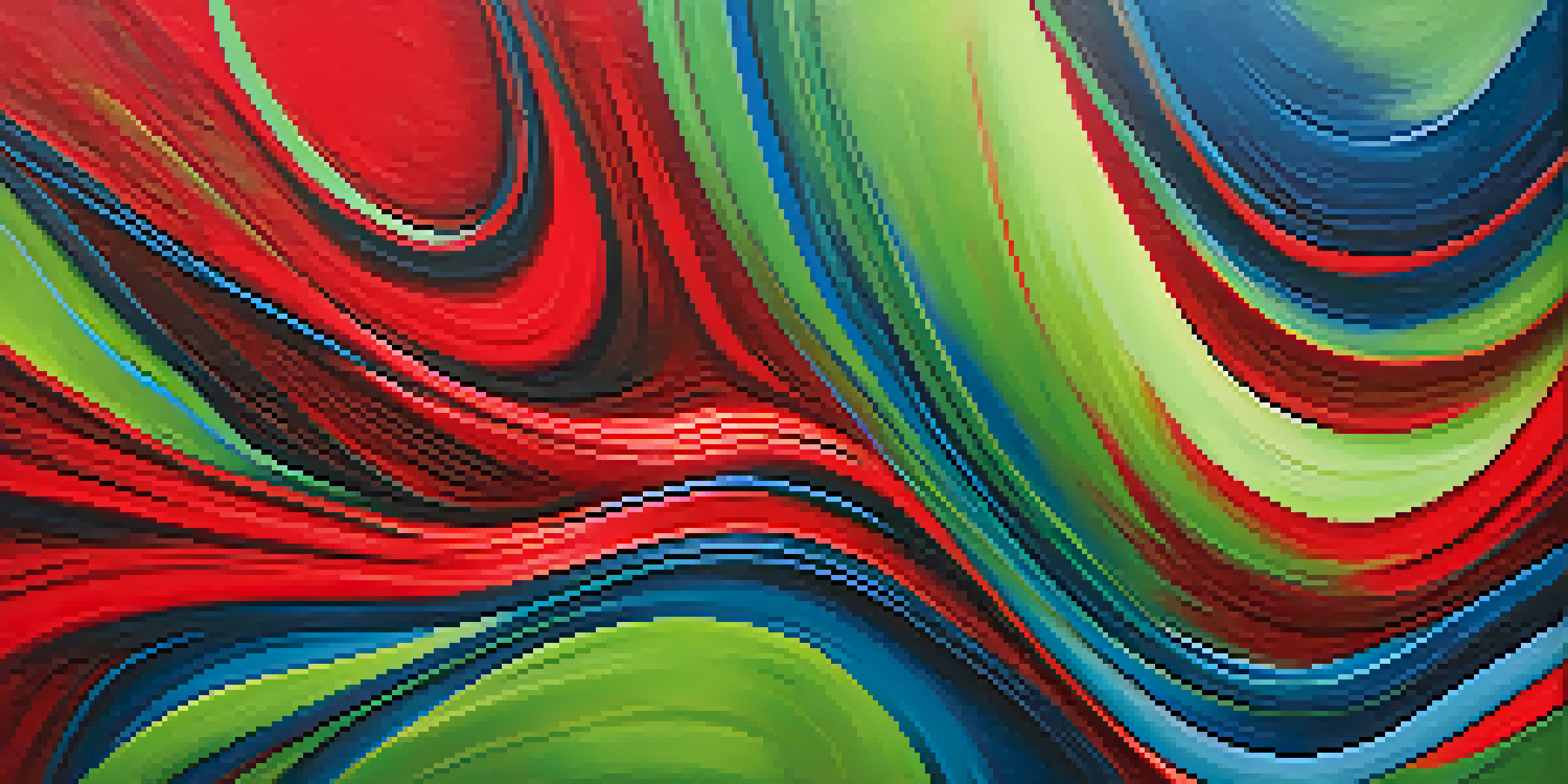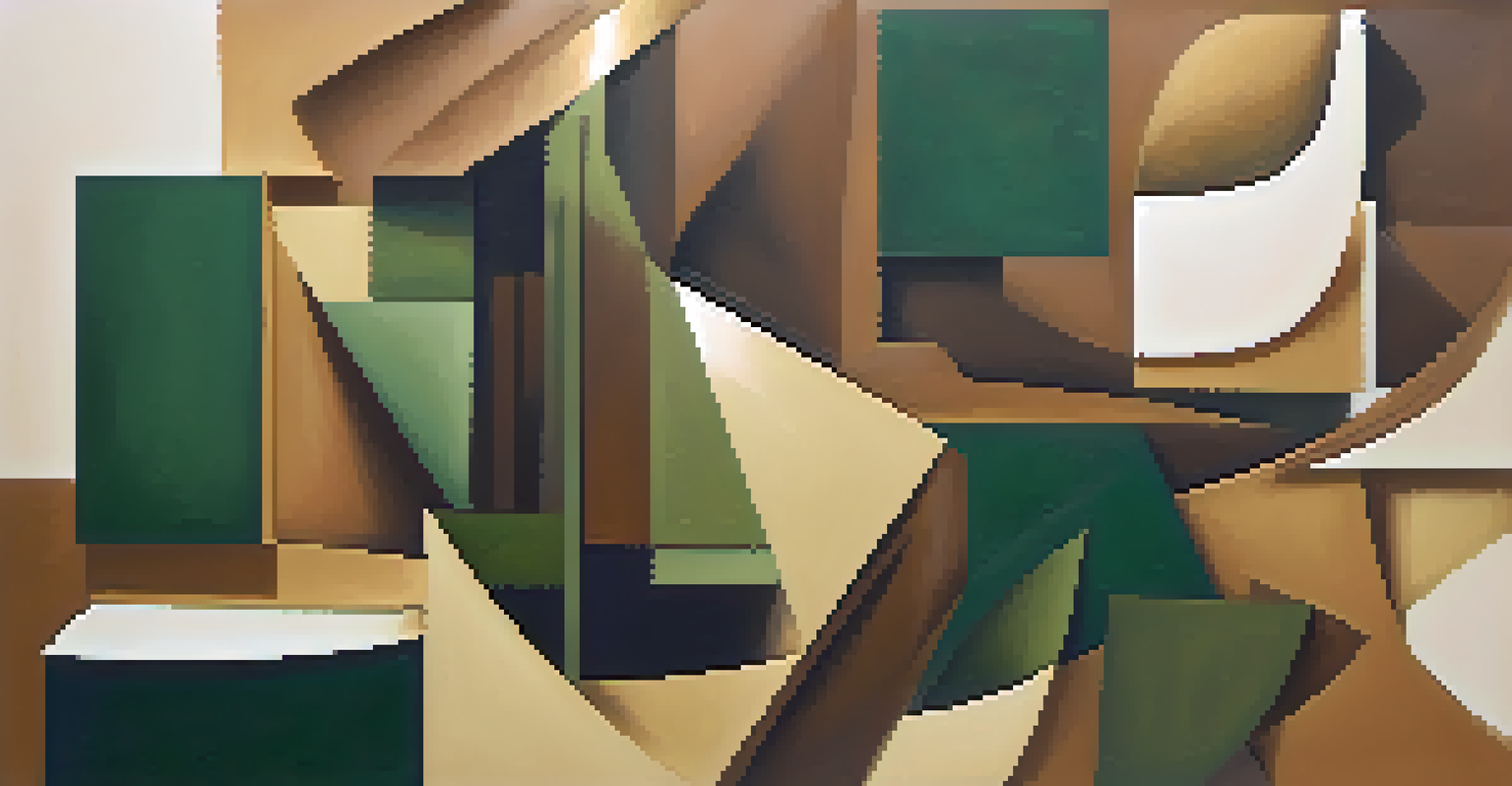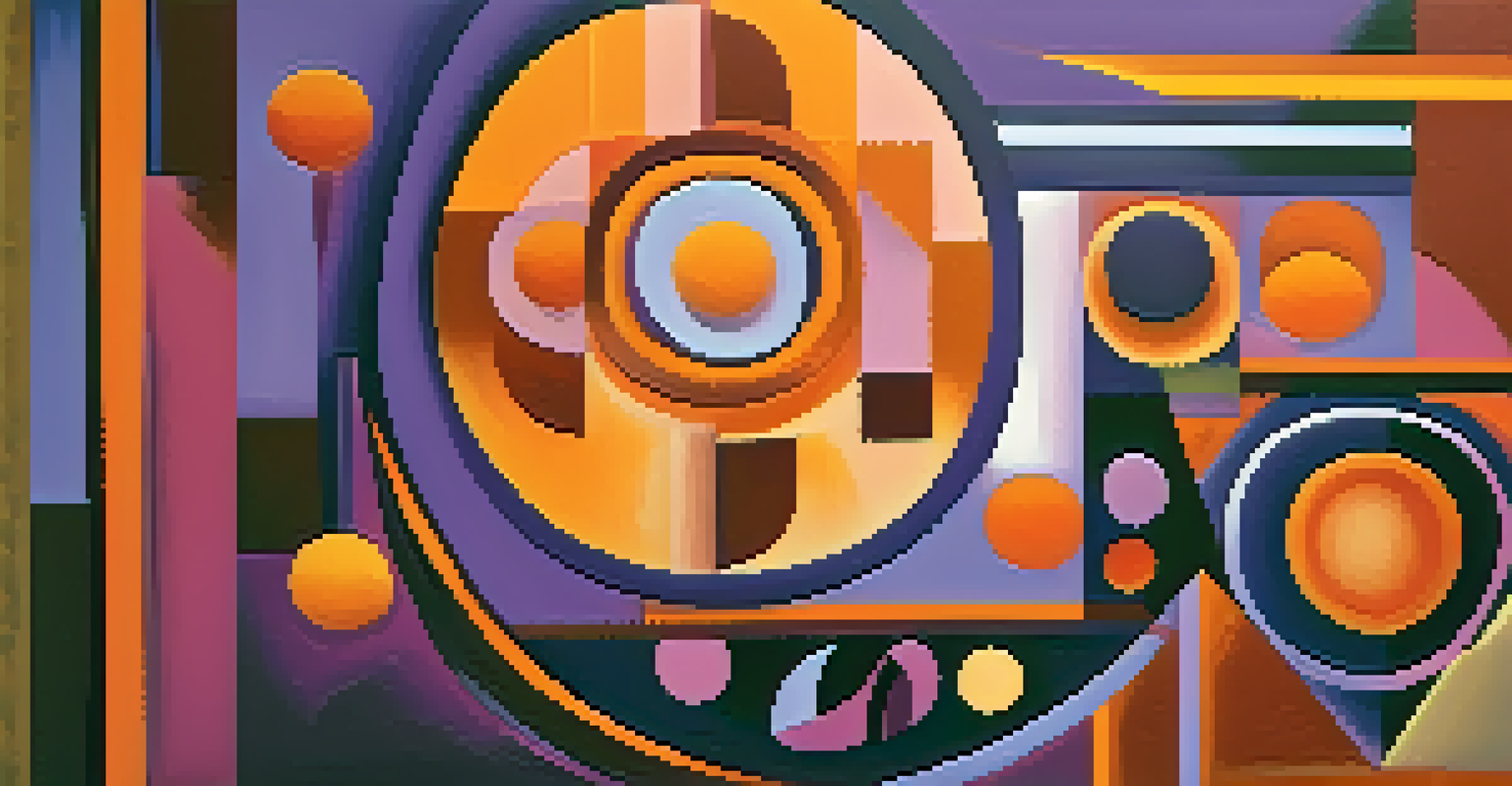The Impact of Culture on Abstract Painting Narratives

Understanding Abstract Painting and Its Cultural Context
Abstract painting often defies traditional representation, focusing instead on colors, shapes, and forms. This form of art can be deeply reflective of the cultural context in which it is created. Each artist’s background, beliefs, and experiences contribute to the narrative woven into their abstract works.
Art is the most beautiful of all lies.
When we think about the impact of culture on abstract painting, it’s essential to recognize how diverse influences shape artistic expression. For instance, an artist from a bustling urban environment may infuse their work with themes of chaos and vibrancy, whereas someone from a serene rural area might evoke tranquility through softer hues and gentle lines.
This blending of personal experience with cultural influences creates a rich tapestry that invites viewers to engage with the artwork on multiple levels. Just as cultures evolve, so too do the narratives found within abstract paintings, making each piece a unique reflection of its time and place.
Cultural Symbols and Their Significance in Abstract Art
Cultural symbols play a vital role in shaping the narratives of abstract paintings. These symbols can range from traditional motifs to modern interpretations that resonate within specific communities. When artists incorporate these elements, they invite viewers to explore deeper meanings behind the visuals.

For example, colors often carry significant cultural meanings—red can symbolize luck in some cultures, while in others, it might represent danger or passion. Through abstract art, these colors are used to evoke emotions and tell stories that might not be immediately apparent through representational art.
Culture Shapes Abstract Narratives
Abstract painting reflects the cultural context and personal experiences of artists, creating rich narratives that invite viewer engagement.
By carefully selecting symbols and colors, artists can create layers of meaning that speak to their cultural heritage and contemporary issues. This dialogue between the artwork and its cultural context fosters a connection between the artist, the piece, and the viewer.
The Role of Personal Experience in Shaping Narratives
Personal experiences significantly influence how artists interpret their cultural surroundings, leading to unique narratives in abstract painting. Each artist brings their own life story to their canvas, blending personal history with broader cultural themes. This results in artwork that resonates on an individual level while still reflecting collective experiences.
Every artist dips his brush in his own soul, and paints his own nature into his pictures.
For instance, an artist who has experienced displacement may express feelings of loss and longing through fragmented shapes and contrasting colors. These personal narratives deepen the viewer’s understanding and appreciation of the artwork, transforming it into a shared experience.
Abstract paintings often serve as a mirror, reflecting both personal and cultural identities. By sharing these narratives, artists create a space for dialogue that transcends cultural boundaries, inviting viewers from diverse backgrounds to connect with the art on a personal level.
Globalization and Its Influence on Abstract Art
Globalization has significantly impacted the world of abstract painting, allowing diverse cultural narratives to merge and evolve. As artists from different backgrounds interact, they share techniques, styles, and ideas that enrich the global art scene. This cross-pollination leads to innovative approaches that challenge traditional norms.
For example, an artist might blend elements from their indigenous culture with contemporary abstract styles, creating a hybrid narrative that speaks to both heritage and modernity. This fusion not only honors cultural roots but also reflects the interconnectedness of today’s world.
Globalization Fosters Artistic Fusion
The merging of diverse cultural narratives through globalization leads to innovative approaches in abstract art that challenge traditional norms.
As a result, the narratives found in abstract painting become more complex and layered, embodying a dialogue between the past, present, and future. This evolution of narrative forms through globalization invites viewers to explore multiple interpretations within each piece.
The Impact of Technology on Artistic Narratives
In today’s digital age, technology has transformed how artists create and present abstract paintings. From digital tools that allow for new techniques to social media platforms that enable artists to share their work globally, technology shapes the narratives behind these pieces. It opens up new avenues for expression and engagement with audiences.
Artists can now experiment with virtual reality, digital painting, and interactive installations, expanding the boundaries of traditional abstract art. These technological innovations not only enhance the creative process but also invite viewers to experience the artwork in immersive ways.
As technology continues to evolve, so too will the narratives within abstract painting. Artists are challenged to adapt and incorporate these advancements, leading to fresh interpretations that reflect the rapid changes in society and culture.
Cultural Critique in Abstract Painting Narratives
Abstract painting often serves as a vehicle for cultural critique, allowing artists to address social issues and challenge norms. By stripping away recognizable forms, artists can focus on emotional and conceptual responses to their cultural environment. This abstraction invites viewers to reflect on complex themes without the constraints of literal representation.
For instance, an artist might use chaotic brushstrokes to convey feelings of unrest or disillusionment, pushing viewers to confront uncomfortable truths about society. These narratives can provoke thought and dialogue, making art a powerful tool for social commentary.
Technology Transforms Artistic Expression
Advancements in technology expand the creative possibilities for abstract artists, enhancing engagement and evolving narratives within the art form.
Through this lens, abstract painting becomes not only a means of personal expression but also a platform for cultural discourse. By engaging with these narratives, audiences are encouraged to consider their own perspectives and the broader implications of the issues presented.
The Future of Abstract Painting in a Cultural Landscape
As we look to the future, the narratives within abstract painting will continue to evolve alongside cultural shifts. Artists will undoubtedly draw inspiration from emerging social movements, technological advancements, and global interactions. This dynamic landscape ensures that abstract art remains relevant and reflective of contemporary experiences.
New generations of artists will bring fresh perspectives, influenced by their diverse backgrounds and the rapid pace of change in society. This infusion of ideas will lead to innovative narratives that challenge conventions and invite exploration.

Ultimately, the future of abstract painting promises to be a vibrant tapestry of cultural narratives, each thread representing a unique story. As viewers, we have the opportunity to engage with these evolving narratives, fostering a deeper appreciation for the richness of abstract art.